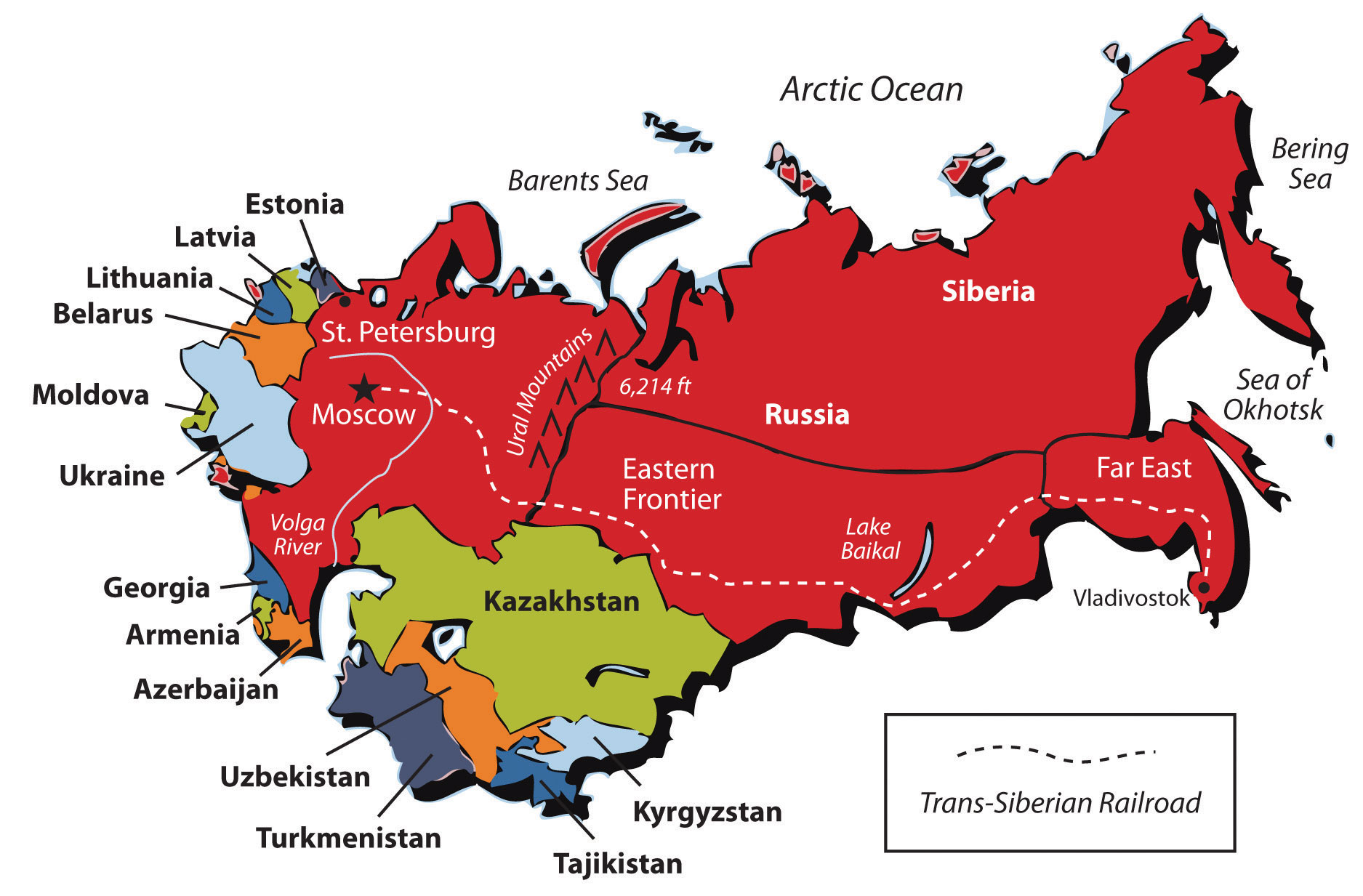
3.12.USSR to Russia
On December 30, 1922, in post-revolutionary Russia, the Union of Soviet Socialist Republics (USSR) is established, comprising a confederation of Russia, Belorussia, Ukraine and the Transcaucasian Federation (divided in 1936 into the Georgian, Azerbaijan and Armenian republics). Also known as the Soviet Union, the new communist state was the successor to the Russian Empire and the first country in the world to be based on Marxist socialism.
The U.S.S.R. extended more than 6,800 miles (10,900 kilometres) from east to west, covering 11 of the world’s 24 time zones. The most westerly point was on the Baltic Sea, near Kaliningrad; the easternmost was Cape Dezhnev on the Bering Strait, nearly halfway around the world.
By December 1991 the Union of Soviet Socialist Republics had virtually ceased to exist, and the future of its territories and peoples was uncertain. Three republics—Estonia, Latvia, and Lithuania—had achieved complete independence and were internationally recognized as sovereign states, and several others were demanding independence.
Attempts were made, led by Mikhail Gorbachev, the president of the Soviet Union, to establish a new “Union of Sovereign States” with some degree of integration in foreign policy, defence, and economic affairs, but agreement among the remaining 12 republics was not achieved. Whatever the legal position, the union republics had begun to act as if they were sovereign states and were negotiating with each other, bypassing the vestigial central government. This process culminated on December 8, 1991, in the signing of an agreement between the three Slav republics of Russia, Ukraine, and Belarus for the establishment of the Commonwealth of Independent States (CIS), with an agreed common policy for foreign affairs and defence. The CIS later came to include all the remaining republics except Georgia, but great difficulty was experienced in arriving at agreed policies. The future thus remained uncertain, but there could be no disagreement with the statement by the leaders of the Commonwealth that “the U.S.S.R. has ceased to exist as a geopolitical reality.”
n the decades after it was established, the Russian-dominated Soviet Union grew into one of the world’s most powerful and influential states and eventually encompassed 15 republics—Russia, Ukraine, Georgia, Belorussia, Uzbekistan, Armenia, Azerbaijan, Kazakhstan, Kyrgyzstan, Moldova, Turkmenistan, Tajikistan, Latvia, Lithuania and Estonia. In 1991, the Soviet Union was dissolved following the collapse of its communist government
